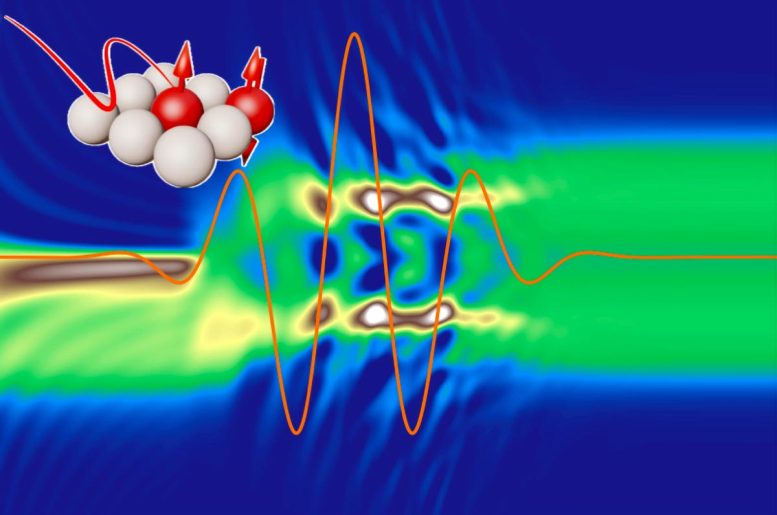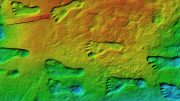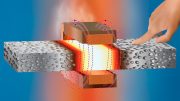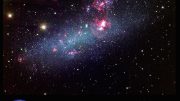
Metal-Insulator phase transition triggered in strongly correlated system by a few-femtosecond pulse (orange curve) and resulting in a dramatic change of density of states, occurs within less than 1 femtosecond. Credit: MBI: Olga Smirnova / Universität Hamburg: Alexander Lichtenstein
Researchers have developed a new spectroscopy method to study ultrafast processes in strongly correlated materials, achieving sub-femtosecond resolution.
An international team of researchers from the European XFEL together with colleagues from the Max Born Institute in Berlin, the Universities of Berlin and Hamburg, The University of Tokyo, the Japanese National Institute of Advanced Industrial Science and Technology (AIST), the Dutch Radboud University, Imperial College London, and Hamburg Center for Ultrafast Imaging, have presented new ideas for ultrafast multi-dimensional spectroscopy of strongly correlated solids. This work will be published today (January 24) in Nature Photonics.
Exploring Strongly Correlated Solids
“Strongly correlated solids are complex and fascinating quantum systems in which new electronic states often emerge, especially when they interact with light,” says Alexander Lichtenstein from Hamburg University and Eu-XFEL. Strongly correlated materials, which include high-temperature superconductors, certain types of magnetic materials, and twisted quantum materials among others, both challenge our fundamental understanding of the microcosm and offer opportunities for many exciting applications ranging from materials science to information processing to medicine: for example, superconductors are used by MRI scanners.
This is why understanding the hierarchy and the interplay of the diverse electronic states arising in strongly correlated materials is very important. At the same time, it challenges our experimental and theoretical tools, because transformations between these states are often associated with phase transitions. Phase transitions are transformations that do not develop smoothly from one stage to the next but may occur suddenly and quickly, in particular when the material is interacting with light.
What are the pathways of charge and energy flow during such a transition? How quickly does it occur? Can light be used to control it and to sculpt the electron correlations? Can the light bring the material into a state that the material wouldn’t find itself in under the usual circumstances? These are the types of questions that can be addressed with powerful and sensitive devices like X-ray lasers such as the European XFEL in Schenefeld near Hamburg, and with the modern optical tools of attosecond science (1 attosecond = 10-18 second or the billionth part of a billionth second. In one attosecond, light travels less than a millionth of a millimeter).
Innovations in Spectroscopy
In their work, the international team now presents a completely new approach that makes it possible to monitor and decipher the ultrafast charge motion triggered by short laser pulse illuminating a strongly correlated system. They have developed a variant of ultrafast multi-dimensional spectroscopy, taking advantage of the attosecond control of how multiple colors of light add to form an ultrashort laser pulse. The sub-cycle temporal resolution offered by this spectroscopy shows the complex interplay between the different electronic configurations and demonstrates that a phase transition from a metallic state to an insulating state can take place within less than a femtosecond – i.e. in less than one quadrillionth of a second.
“Our results open up a way of investigating and specifically influencing ultrafast processes in strongly correlated materials that goes beyond previous methods,” says Olga Smirnova from the Max Born Institute and Berlin TU, awardee of the Mildred Dresselhaus prize of the Hamburg Centre for Ultrafast Imaging, “we have thus developed a key tool for accessing new ultrafast phenomena in correlated solids.”
Reference: “Sub-cycle multidimensional spectroscopy of strongly correlated materials” by V. N. Valmispild, E. Gorelov, M. Eckstein, A. I. Lichtenstein, H. Aoki, M. I. Katsnelson, M. Yu. Ivanov and O. Smirnova, 24 January 2024, Nature Photonics.
DOI: 10.1038/s41566-023-01371-1









Photons and quantum are different. The breakthrough in quantum lies in the combination of mathematics and physics. The combination of mathematics and physics is not imagination. Using a cat that is both dead and alive as an analogy to quantum is even more absurd.
Topological vortices are point defects in spacetime. Point defects do not only impact the thermodynamic properties, but are also central to kinetic processes. It is both a mathematical figure and a low dimensional spacetime material. Low dimensional spacetime matter is the foundation of high-dimensional spacetime matter.
The rotation of topological vortices is spin. Spin is synchronized with energy, spin is synchronized with gravitation, spin is synchronized with evolution, spin is synchronized with time. Each topological vortex is left-handed when viewed from the front and right-handed when viewed from the back. Each topological vortex is a superposition of left-handed and right-handed vortices. The synchronization effect of different topological vortices makes the evolution of spatiotemporal motion more complex.The quantum can be the topological vortices. Quantum is not a cat that is both dead and alive.
The Physical Review Letters (PRL) firmly believe that two objects (such as two sets of cobalt-60) of high-dimensional spacetime rotating in opposite directions can be transformed into two objects that mirror each other, is a typical case of pseudoscience rampant.
Seems like this could be used for much more than just imaging. Pretty sure people studying nonlinear optical processes will do more elaborate experiments with attosecond resolution.
Reading the word salad in the comments here is incredible.
Very good. You are amazing and honest.
Pseudosciences must help each other to sustain themselves. The word salad is not only incredible, but also intolerable. We cannot cut off our financial path.